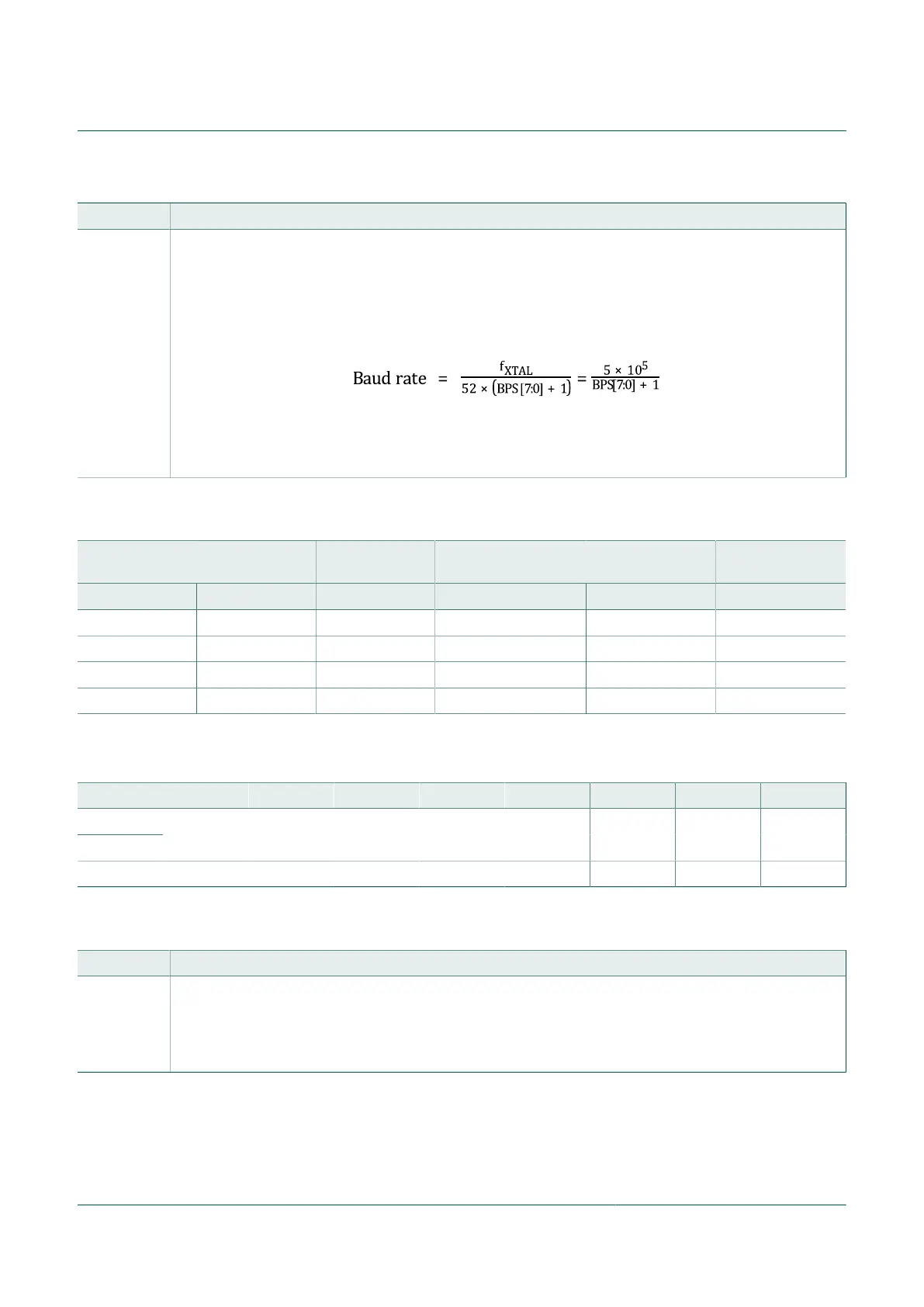NXP Semiconductors
UM11227
NTM88 family of tire pressure monitor sensors
UM11227 All information provided in this document is subject to legal disclaimers. © NXP B.V. 2020. All rights reserved.
User manual Rev. 6 — 24 April 2020
118 / 205
Table 103. RFCR0 register field descriptions
Field Description
7:0
BPS[7:0]
The BPS[7:0] bits select a divider for the incoming external crystal clock to generate the baud rate. The
operating range of BPS[7:0] is $00 up to $FF. Reading BPS[7:0] provides the value written. This results in a
baud rate from 1953 up to 500,000 bits per second, when the external crystal clock is 26 MHz.
The conversion from the decimal value of the BPS[7:0] bits to the baud rate is given as described in the
following equation. Power-on-reset forces BPS[7:0] to a value of $34 (decimal 52), and results in baud rate
of 9434 bits per second, assuming external crystal clock is typical 26 MHz.
Where:
f
XTAL
= External crystal frequency in Hz = 26 MHz
$34 = Result of Reset
Table 104. Data rate option examples
Data Rate
BPS[7:0]
Decimal Value
Data Rate
BPS[7:0] Decimal
Value
Target Nominal f
XTAL
= 26 MHz Target Nominal f
XTAL
= 26 MHz
2000 bit/s 2000.0 249 4800 bit/s 4807.7 103
2400 bit/s 2403.8 207 5000 bit/s 5000.0 99
4000 bit/s 4000.0 124 9600 bit/s 9615.4 51
4500 bit/s 4504.5 110 19200 bit/s 19230.8 25
10.16.11.2 RFM control 1 register (RFCR1)
Table 105. RFM control 1 register (RFCR1) (address $1831)
Bit 7 6 5 4 3 2 1 0
R
W
FRM7 FRM6 FRM5 FRM4 FRM3 FRM2 FRM1 FRM0
Reset ($00) 0 0 0 0 0 0 0 0
Table 106. RFCR1 register field descriptions
Field Description
7:0
FRM[7:0]
The 8 bits FRM[7:0] select the number of bits in each datagram. The number of bits is determined by the
binary value of the FRM[7:0] bits plus one. This makes the range of bits from 2 to 256. A value of $00 for the
FRM[7:0] control bits will result in no frames being sent. The FRM[7:0] control bits are cleared by RFMRST
signal.
$00 = Result of Reset
